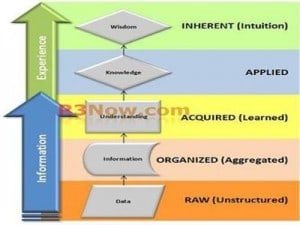All too often, I see SAP Project Management done improperly. As I have often said, I do not generally fault customers or clients who hire outside help for SAP project management. If they believed they had the answers, they wouldn’t bother with contractors for guidance.
Too often, I see SAP project management treated as project administration without much leadership. Just about anyone can be a checklist administrator. What is lacking from many SAP projects is the project management leadership to move things along.
After managing a few SAP projects myself, I have learned an effective formula for SAP project success: a project manager who can actually lead the project. What do I mean by leadership? I mean someone who actually pitches in, rolls up their sleeves, gets busy, and gets their hands dirty. They must be directly engaged with the project participants rather than serving as passive administrators.
SAP project leadership that involves enough direct involvement in project coordination requires them to do the following:
- Create a sense of urgency to build momentum.
- Maintain that sense of urgency and maintain momentum.
- Eliminate obstacles, roadblocks, and impediments that slow (or even stop) SAP project momentum.
- Manage conflict (which will happen if sufficient momentum is gained).
- Set, manage, and maintain expectations with both the project participants and the broader areas affected by the SAP project outcomes.
1. Creating a Sense of Urgency
I am still amazed at how often SAP project managers or program managers avoid using project plans with WBS structures, tasks, activities, assorted milestones, etc. The only sense of urgency they create is reactive firefighting. Everything that such a project team does is last minute, single threaded, chaotic, disjointed, panicked, and difficult to follow. Without a structured project plan, any dates are just aspirations at best, and the team will continuously miss timelines. This avoidance may be from a inability, fear, or an attempt to evade accountability. Whatever the reason, it happens too often. Maybe you should be asking yourself, “What deliverables, tasks, and execution activities should my contracted leadership be providing?”
The Effective SAP Project Plan and Project Structure
To create a proper sense of urgency, you should have a fairly tight timeline but with clearly defined milestones, tasks, deliverables, templates, and instructions on how to support project execution. Those deliverables must measure project progress and be carefully managed. When you communicate and then support the message that as an SAP project manager your goal is to ensure the success of the project participants, you will find desperately needed leadership.
For each project phase or upcoming milestone, an SAP project manager must have well-defined presentations on the timeline, templates, instructions, and resources to accomplish each set of tasks.
Nearly every contract SAP project manager somehow manages to put together steering committee presentations, so why do they have such a hard time putting together critical project supports? What are they really presenting to the steering committee if they aren’t providing meaningful project guidance?
If SAP Project Decisions Need to be Made, Get Them Made Immediately
Over the years, I have been blessed with quality mentors. Back when I was an early manager in industry, long before consulting, I learned a major lesson from our GM (and a senior VP). We had a problem come up. However, the GM wasn’t around to consult, so I did nothing. I was the operations manager responsible for all shop floor production areas– over a dozen leads and over 200 employees at the time. My lack of decision making brought large portions of the production floor to a halt.
A “manager” who doesn’t make decisions isn’t managing or leading anything.
When the GM/VP got back, he immediately set about to get things going, providing fast decisions and immediate direction. After things got going again, he called me into his office, and we had a short discussion about my career. He was polite but firm and provided me a very valuable lesson.
The GM expected me to make the decision I believed was correct, even if it turned out wrong. He said that eight or nine times out of ten, my decision would probably be right. One or two might be wrong or maybe not the best decision, but such mistakes were easier to correct than doing nothing. He promptly let me know if I made a bad decision he would hold me accountable, but it would not be as bad as making no decision at all. He would hold me accountable for my decisions to help me learn to make better decisions. However, if I couldn’t make a management decision to keep things going at all, what was the point of me being an operations manager?
That was a profound insight. If you won’t make the tough decisions as an SAP project manager, then what are you managing?
Decisions must be made as quickly as humanly possible. Delaying key decisions, or delaying any decision making, creates the appearance of indecisiveness, reduces confidence in your ability to lead, creates constant “swirl” around key issues, and slows the project. Delays also create an atmosphere where others avoid decision-making and become embroiled in analysis paralysis, because that is the culture you as the project manager are creating.
In the next post, we further our discussion on building and maintaining momentum and the sense of urgency.







Hi Bill,
These leadership tips are generic across all projects, and not just SAP projects.
About the sense of urgency, I have published an article (a long time ago) on this very subject: http://www.pmhut.com/gain-a-sense-of-urgency (having a sense of urgency is a characteristic of good project managers).
Thanks for the comment. There is a lot of material here that applies to all types of projects but these are generally related to my experience with SAP.
Thanks again for the feedback.